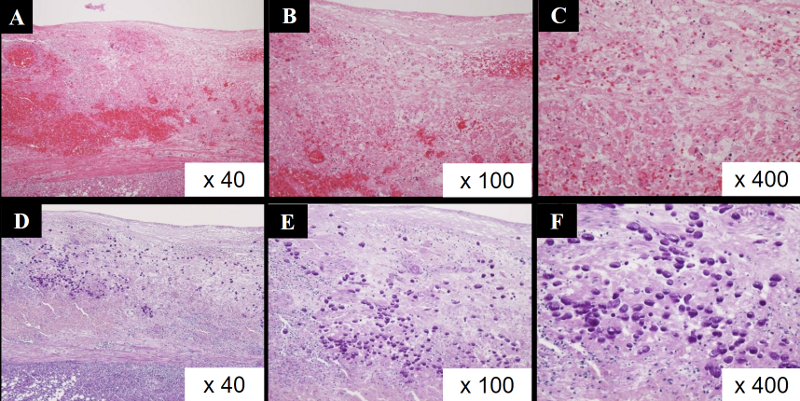Complications
Rare complication; little is known about prognosis.[3] Patients may report altered mental status or limb weakness.
Amoebic acute appendicitis is a rare manifestation of amoebiasis and is associated with a higher rate of complications and mortality than non-amoebic appendicitis. Histopathological examination and extra precautions are warranted when amoebic appendicitis is suspected.[8][Figure caption and citation for the preceding image starts]: Amoebic appendicitis with skin fistula two weeks after appendectomy (enhanced computed tomography).Original photo from National Center for Global Health and Medicine, Tokyo, Japan. [Citation ends]. [Figure caption and citation for the preceding image starts]: Hematoxilin-Eosin stain (A-C) and Periodic acid-Schiff stain (D-F) of resected appendix of amoebic appendicitis. Entamoebas are deeply dyed by Periodic acid-Schiff stain.Original photo from National Center for Global Health and Medicine, Tokyo, Japan. [Citation ends].
[Figure caption and citation for the preceding image starts]: Hematoxilin-Eosin stain (A-C) and Periodic acid-Schiff stain (D-F) of resected appendix of amoebic appendicitis. Entamoebas are deeply dyed by Periodic acid-Schiff stain.Original photo from National Center for Global Health and Medicine, Tokyo, Japan. [Citation ends].
Annular granulation tissue in the caecum or ascending colon, extending from the wall into the lumen. Can be mistaken for colonic carcinoma.
Responds to medical therapy.[1]
Use of this content is subject to our disclaimer